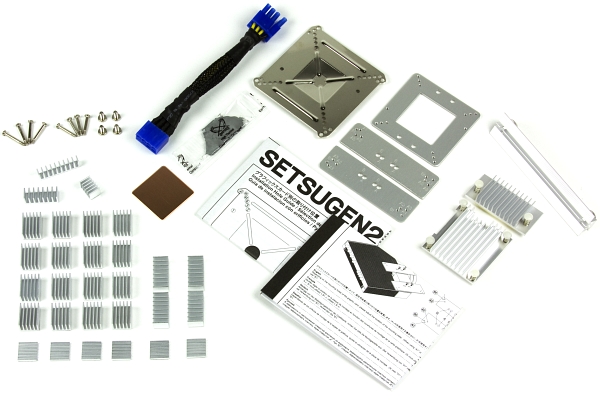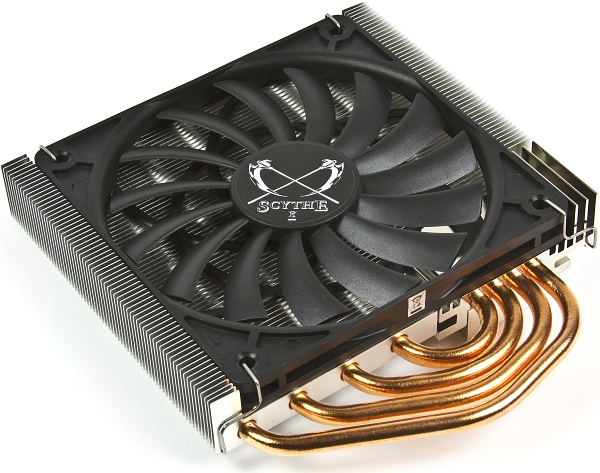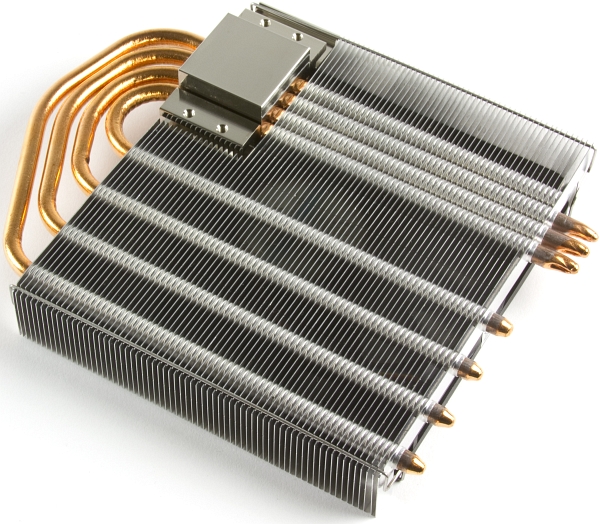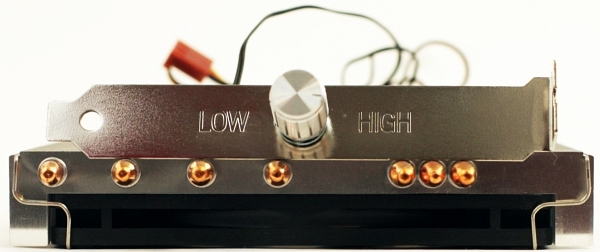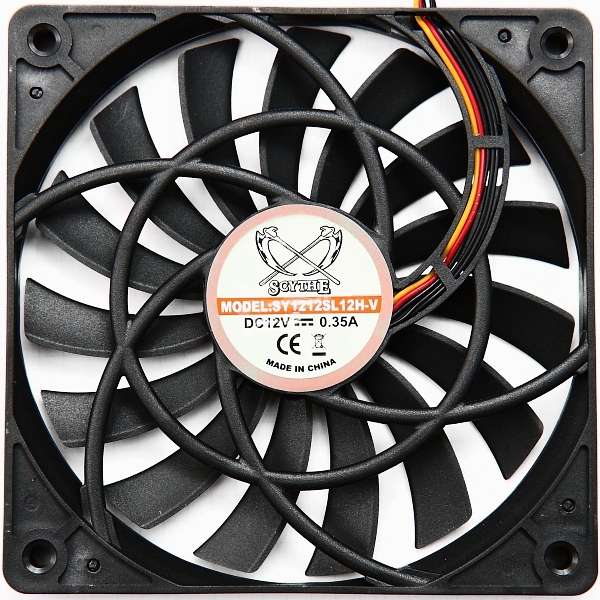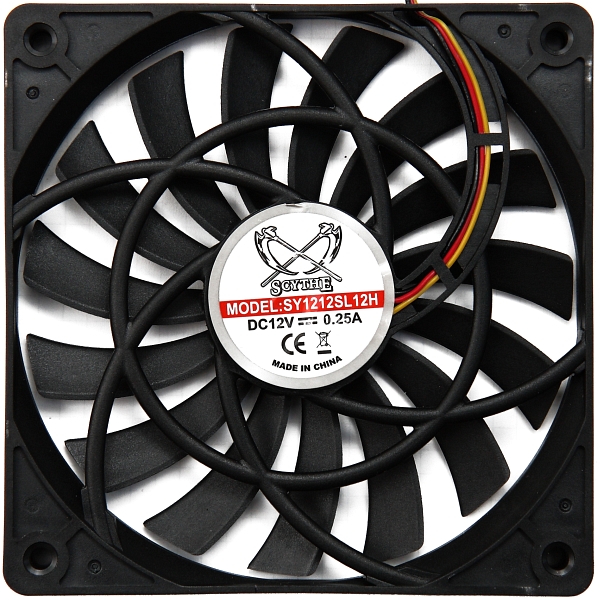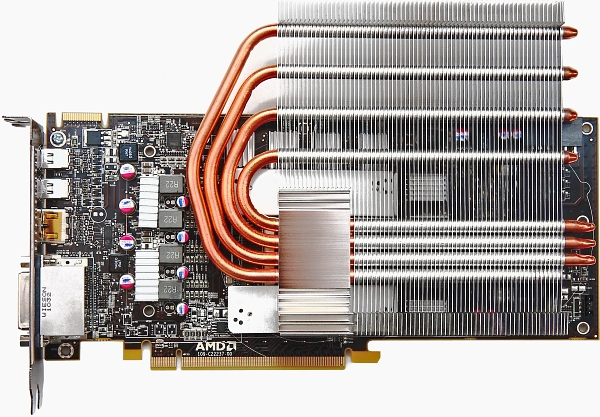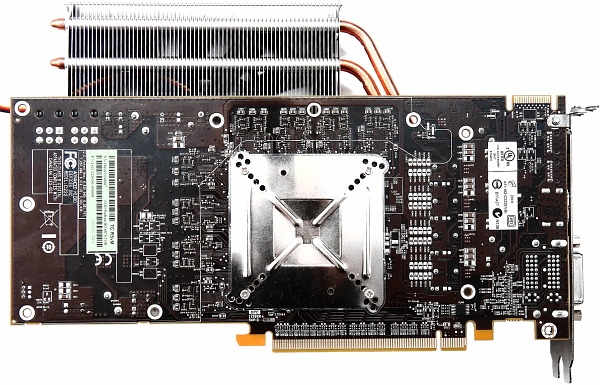Index


Review: Latest Scythe VGA-Cooler with superb potential
This review is also available in German.
Exactly one year ago we reviewed the first Setsugen VGA-Cooler from Scythe. Today we take a look at the new Setsugen 2 which is radically different from its older brother.
Overview:
As can be expected, the compatibily list has greatly improved and now covers pretty much any nVidia GeForce Card up to GTX 470 as well as Radeon HDs up to 6870. Because the cooler went on sale in Japan before the HD 68xx cards where launched, you won't find any mention of these cards of them on the package or installation sheets. This cooler would also cool the GTX 480/580 cards, but because the VRM regulators are on the left side of the card you need additonal cooling to keep the cards from damage. The package contains lots of additonal parts. To save money Scythe did not include PCIe 6pin power extender nor a second PCIe 8pin power extender which would protect the cooler if you need to swap your card more often. Due to the size of the cooler it's quite hard to remove the power-connectors.
You will notice the shape of the cooler is more quadratic and the four heatpipes go twice through the aluminium fins to optimize heat-disappation. It measures 176x139x33mm which will make any graphics-card into a two slot design. The overhanging portion of the cooler will hinder its use in Mini-Tower cases. As usual, the workmanship is excellent.
As expected from Scythe, the workmanship is excellent, but nickel-plated heatpipes would not have hurt.
For some reason Scythe sticks to the annoying fans with fan-controller bracket. It would be more usefull to supply a cable with adapters for common 3-pin and 4-pin graphics-cards fan-connectors. This would allow the graphics-card to control the fan depending on the temperature and would also save a slot. Of course it's recommended to keep one slot free, but nowadays extremly short-sized PCIe adapters are available which would not hinder air-flow. The overhanging cooler-designs prevents heat accumulation directly on the graphics-card.
If you are as annoyed as we with the fan-controller, you can use any other 12mm slim fan to either keep the two-slot design or fit a 25mm fan with cable straps which will improve the airflow greatly. As you can see the identical fan without the controller is available for about €6,30. Both fans rotate up to 2000rpm and the airflow is up to 78m³/h or 45.5CFM.
Testbed:
Motherboard:
MSI P55-GD65 (provided by MSI)
Intel P55
CPU:
Intel Core i5 750 (provided by Intel) overclocked to 4.00GHz
CPU-Cooler:
Scythe Grand Kama Cross (provided by Scythe)
Memory:
G.Skill 4GB Kit PC3-12800 Eco (provided by G.Skill)
1600MHz CL8-8-8-24 CR1T 1.40V
Graphics Card:
AMD Radeon HD 6870 1GB (provided by
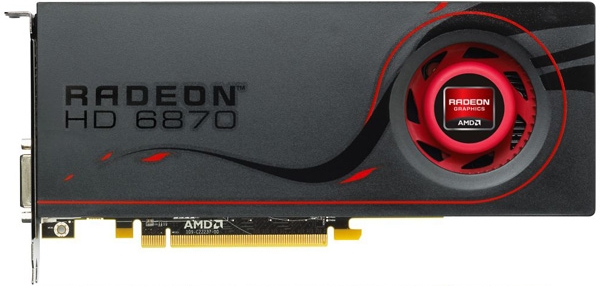
Power supply:
PC Power & Cooling Silencer 500W (provided by PC Power & Cooling)
Hard disk:
Samsung F1 1000GB RAID-Edition (provided by Ditech)
Case:
Cooler Master Stacker 831 Lite (provided by CoolerMaster)
OS:
Windows XP SP3, updates November 24th, 2010
Windows 7 Ultimate 64bit, updates November 26th, 2010
Software:
Furmark 1.8
MSI Afterburner 2.1beta4
Lost Planet 2 Benchmark
Special thanks to Rob of Scythe and Andi F. for helping with the pictures.
Now let's build the Setsugen 2 on the HD6870. The installation is quite straight forward but fiddly especially when fixing the screws. You can't see the holes where the screws must go in because the scews are going through the back of the card. This is the only problem mounting the Setsugen 2. As usual make sure all chips are clean before strapping the heatsinks with adhesive pads - press them properly and give it an hour before installing the cooler. When you are done, the card should look like this:
For our first tests we used the fan that came in the package. The new fan-mounting clips are much easier to use compared to the previous Setsugen. Any 12mm fan will fit. If you decide to use a standard 25mm fan, you need to use cable straps and the card will exceed the two-slot design.
On the backside you see the screws which gave us some headaches. The mouting plate is coated with a thin plastic cover to prevent potential short-circuiting.
Even as two slot design, the card now weights a ton less, because only the GPU plate and the heatpipes are made of cooper, while the rest is made from aluminum. The cooler weights only 435g and even with the heatsinks you should not exceed half a kilogram.
The cooler is about 5cm taller than pretty much any graphics card, so make sure your case can fit the cooler.
After strapping our graphics-card with the Setsugen 2, you need to connect the fan to any fan-connectors on your mainboard or via an adapter directly to your power-supply. We chose our mainboard. We turned the knob to the lowest possible setting and set the fan in the mainboard BIOS to 100%. That resulted in about 760rpm and the fan to be inaudible. AMD Radeon HD6870's stock cooler is almost inaudible in idle mode, but the Setsugen beat it there too. Of course at full speed the fan rotates at 2000rpm and is very audible, but still much more bearable than anything AMD has to offer.
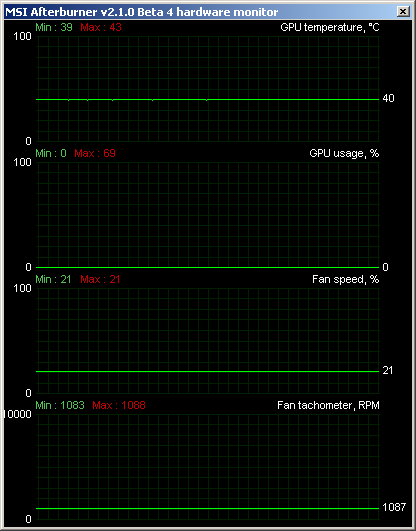
40°C in idle is nothing to worry about but at nearly 1087rpm, the cooler is audible.
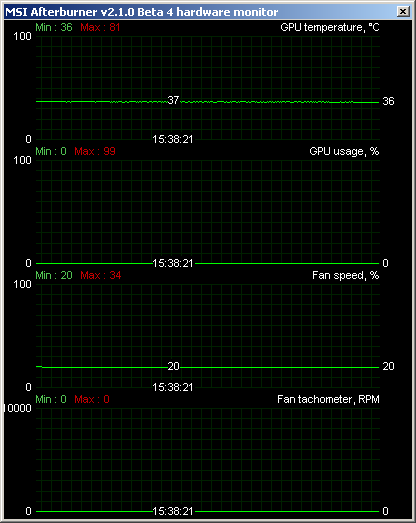
As you can see, even with the lowest setting the idle temperature is 3°C lower compared to the stock cooling.

For more balanced cooling we would recommend to set the fan to around 1000rpm, which is what we did. The fan is nearly inaudible and Setsugen 2 shaves off another 2°C.
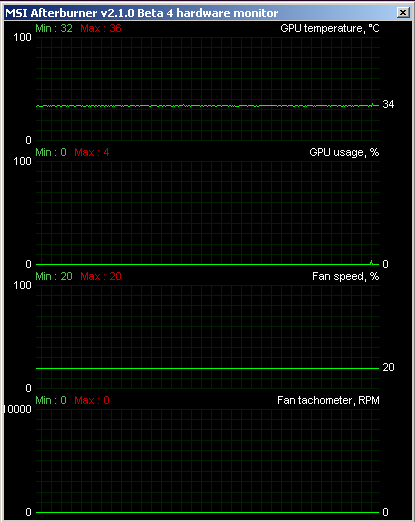
With 2000rpm the temperatures go down about another 2°C but is quite loud. It's not unbearable like the stock-cooler at gaming, but we still considered it loud.
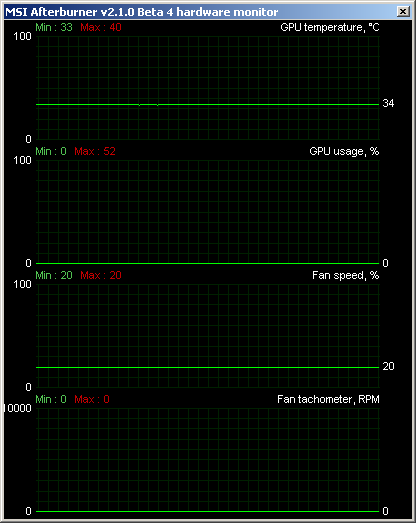
We found a 25mm fan from Scythe from the first Ninja cooler which was quieter than the newer models. You need cable straps to fix the fan on the cooler but this is minor annoyance. At 75% setting in the BIOS, the fan rotates with about 960rpm. It's also nearly inaudible but due to the bigger blades it can push more air. As you can see the temperatures are steady 34°C which is the same as the original fan at full speed.

The Catalyst driver does slow down the card under load but we did not find any game which would exceed Furmark's temperatures or fan-speeds. As you can see the stock cooler heats up to 85°C and the fan is very loud - more annoying compared to the Setsugen 2 at full speed.

Even with the lowest setting at 760rpm the Setsugen 2 beats the stock cooler by up to 5°C. All in all, 80°C is safe for GPU standards.
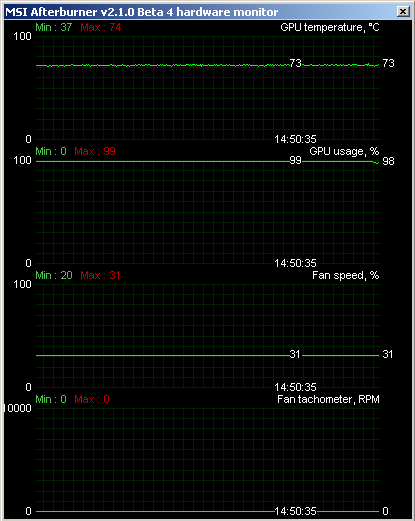
With just 1000rpm the temperature drops another impressive 7°C.
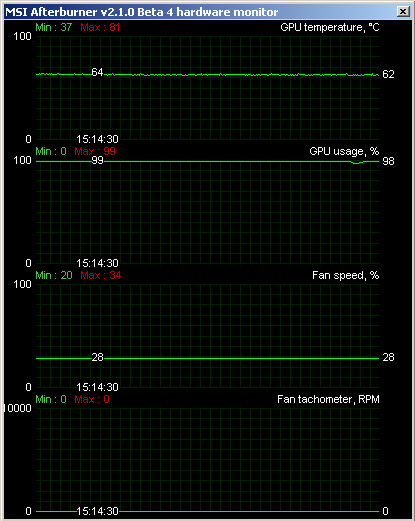
At full speed the Setsugen maxed out at 64°C. But of course, we don't like it that noisy.
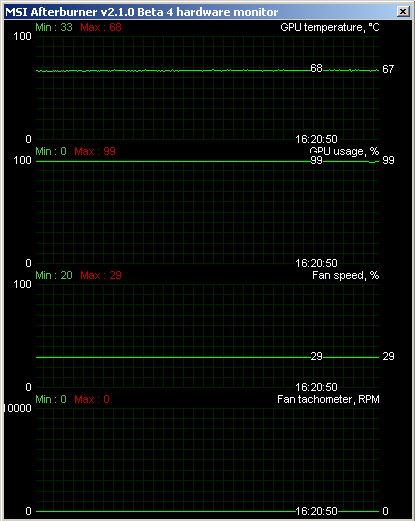
With the 25mm fan at 960rpm the Setsugen manged 68°C which is 17°C less compared to the stock cooler.
Just to prove that no game can come close to Furmark temperatures, we also tested with the Lost Planet 2 Becnhmark, but we avoided the stock cooling due to the noise.
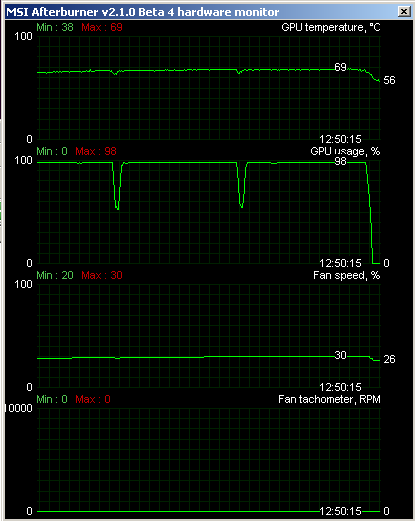
While Furmark maxed out with 81°C it's pretty clear that actual games will not reach such temperatures. With 69°C at it's lowest setting the Setsugen 2 is more than sufficient for cooling the HD6870.
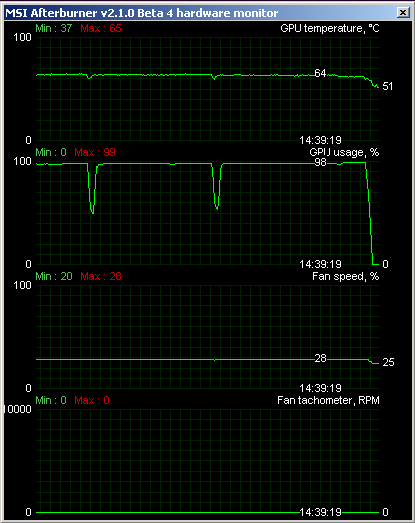
At 1000rpm you get another 5°C off the card.
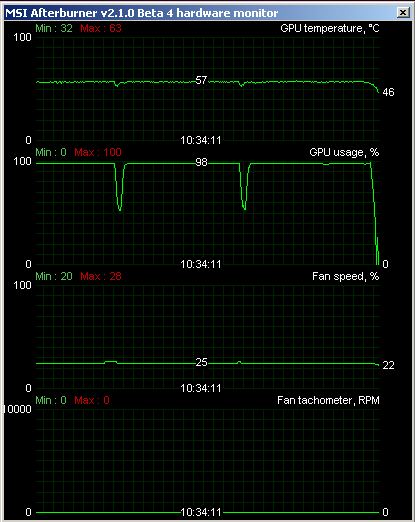
At full speed another 7°C are shaved off the temperature-scale.
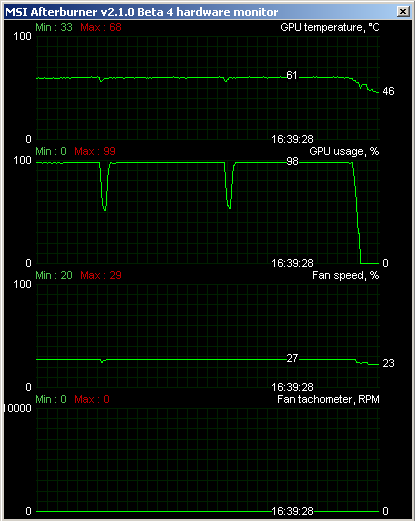
As expected the 25mm does not do so well compared to the slim fan at full speed, but 61°C is just great for an inaudible cooling solution.
We also tested the DX11 version of Lost Planet 2. Besides a massive drop of fps and little more eye-candy, the reduced framerate also had an impact on the temperatures.
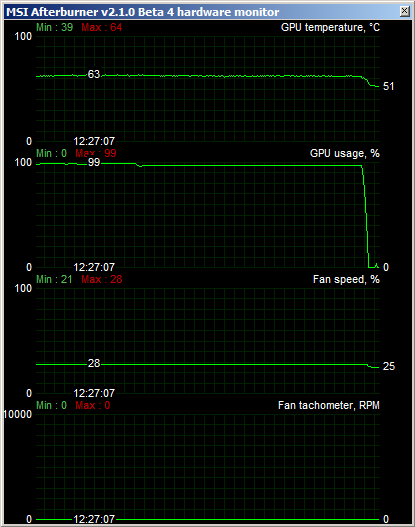
With less than half the framerate compared to the DX9 version, the temperature reaches only 63°C.
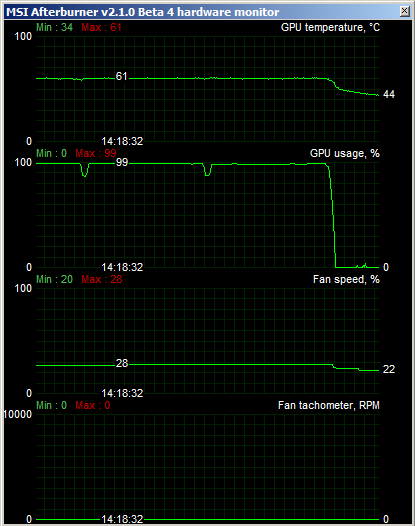
At 1000rpm it manages 61°C, just 2°C shy of the lowest rpm setting.
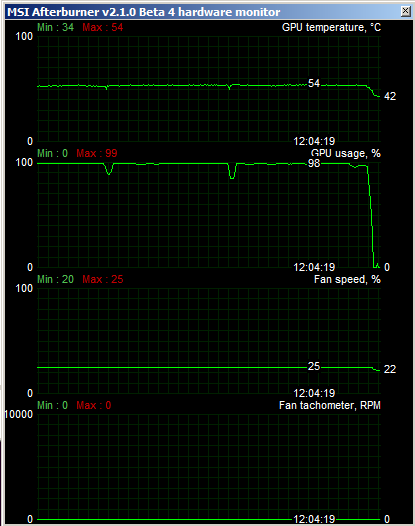
Just 54°C at full speed is impressive, some passive cards would like such temperatures when idle.
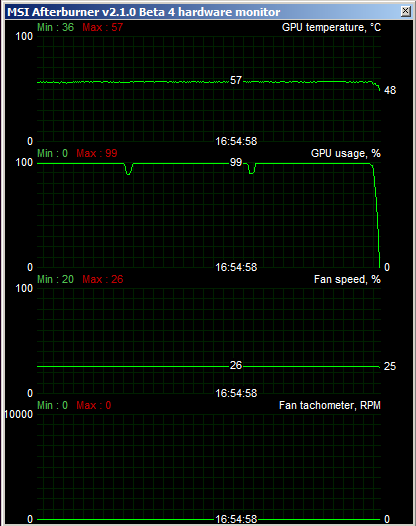
With the 25mm fan we also managed to get under 60°C.
Conclusion
We'll start with the cons - we don't like the fan controller. There is no reason whatsoever that makes sense for such a move. In future versions we would like to see adapters for the graphics-card fan-connectors. Also, the installation of the cooler is fiddly and to have stud bolts with screw nuts as the first Setsugen had would have made installation much easier. Furthermore, the installation instruction sheet is a joke with such small letters that you may have to use a magnifying glass. A small CD with a real manual would be the better choice. Due to the size of the cooler with its rather unusual design, you'll need a case which offers 5cm space to the door otherwise the cooler won't fit. That's a down compared to the first Setsugen which fit in any case.
However, and we really do love those "howevers", once you have installed the cooler the results speak for themselves. HD6870 is a midrange card roughly as fast as the older HD5850 and with the TDP slashed by 20W, but even the lowest fan settings on Setsugen 2 offer sufficient and inaudible cooling. The product is certified to cool anything up to GTX 470 series. You may even install it on GTX 480/580 cards, but the VRM portion is located on the left side of the card, so you need to cool that seperately. The installation on a HD6970 should be possible because the fan will cover the VRM portion, although you may need to improvise with the heatsinks and set a higher fan-speed. Even at 1000rpm or with any 25mm fan running at similar speed - the cooler stays very quiet.
The cooler will be released in Europe and USA on December 3rd and should retail about €35,- to €40,- which is not cheap but justified. The first listings have appeared and you can check them out here.
There are a few quirks, yes, but actual performance is flawless. So, if you want impressive cooling without the common noise, then Fudzilla Recommended Scythe Setsugen 2 should definitely be among the first on your list.

On of our users requested an update with a HD4890, which should be a little hotter compared to the HD6870. Our HD4890 is clocked at 850MHz for the core and 975MHz for the memory. Overclocked versions will of course get hotter. We were pretty impressed with the results so we didn't bother testing at 2000rpm.
HD4890 idle temperatures:
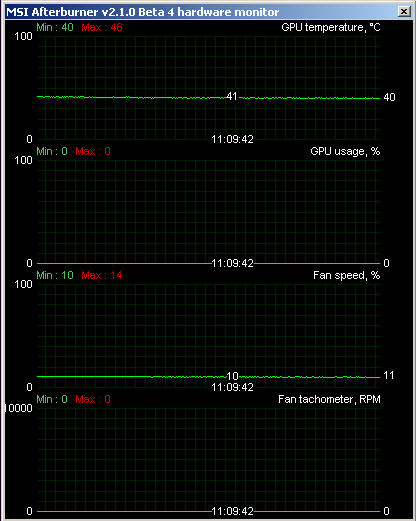
Idle temperatures at 760rpm.

Of course lower with 1000rpm.
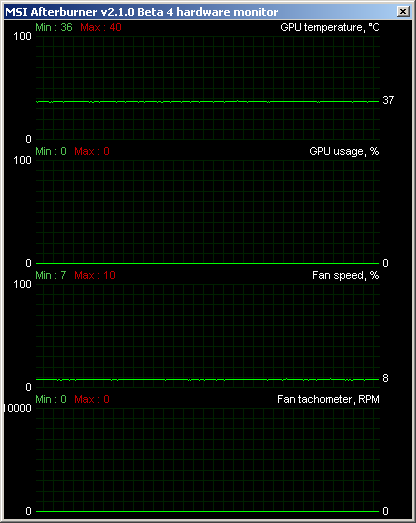
Idle temperatures with a 25mm fan at 1000rpm.
HD4890 Furmark:
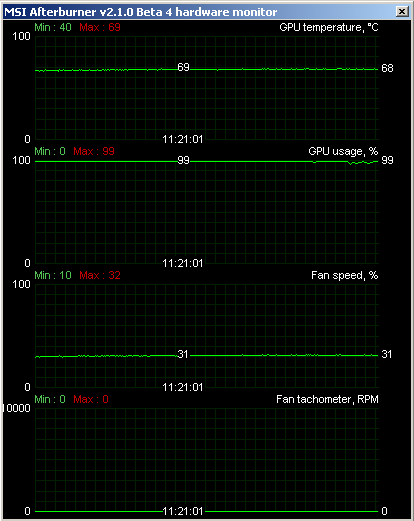
760rpm; indeed very impressive.
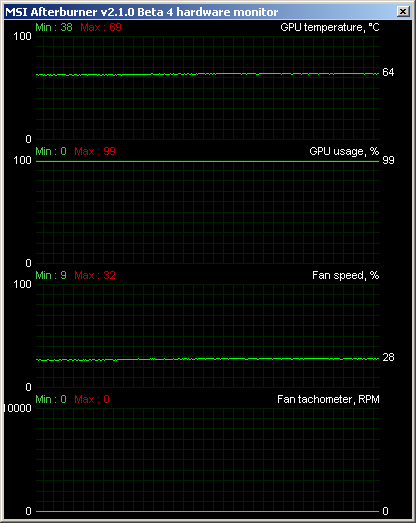
At 1000rpm 5°C less.
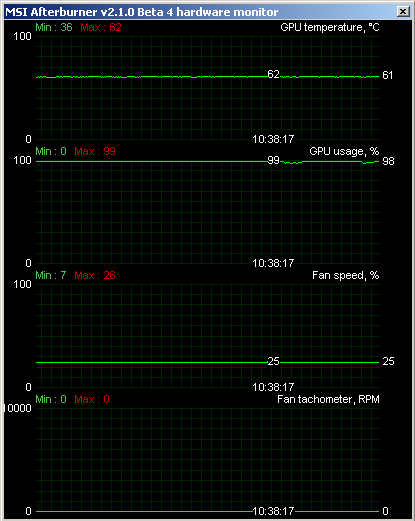
The 25mm fan at 1000rpm is of course the best.
Lost Planet 2:
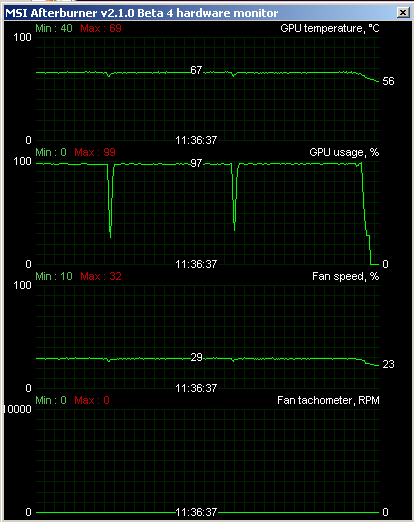
At 760rpm we nearly hit Furmark temperatures, but nothing to worry about.
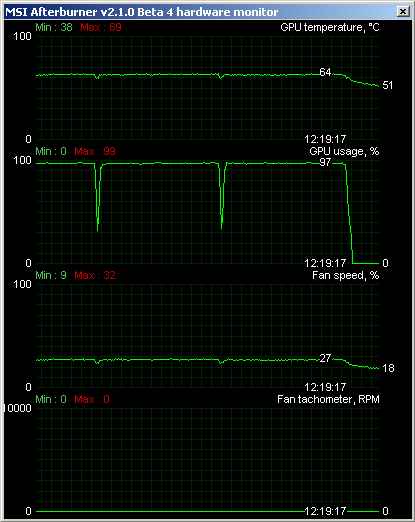
1000rpm; on par with Furmark.
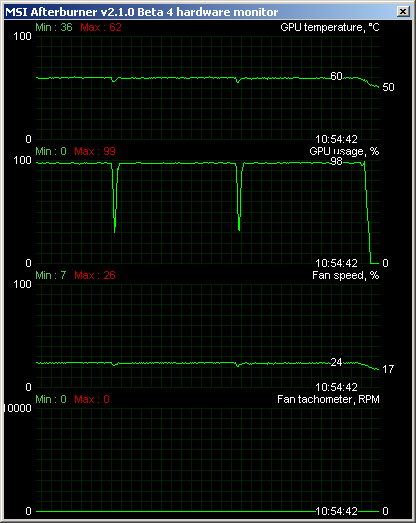
The 25mm is, as usual, the most efficient.


